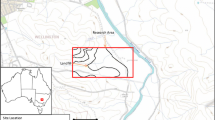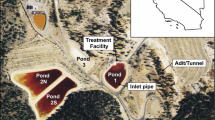Abstract
In fall of 2008, the Missouri Geological Survey Program, Missouri Department of Natural Resources began testing a remotely deployed, multi-sensor submersible fluorometer. The submersible data logging fluorometer is capable of integrating up to six sensors, including fluorescence and turbidity, with the device’s standard temperature and pressure sensors. Fluorescein, Rhodamine WT™ (Acid Red 388, manufactured by Chemcentral), optical brightener, and turbidity probes were installed on the unit. The instrument measures fluorescence in relative fluorescence units (RFU) that can be correlated to known concentrations. Data from laboratory testing indicated that the unit was capable of detecting tested water tracers in concentrations as low as one part per billion (ppb) in a zero turbidity environment and at concentrations of 10 ppb, even in turbid water. Background reflectance and fluorescence levels from organics in the environment and other tracers were determined to be insignificant for the fluorescein and optical brightener sensors. However, the Rhodamine WT probe gave false-positive readings when fluorescein dye was present due to spectral overlap from the fluorescein sensors excitations source. Spectral overlap was reduced to <1 % at all concentrations with the addition of a light-reducing shield to the Rhodamine WT sensor. The unit allowed simultaneous detection of multiple fluorescent water tracers and measured water quality parameters during extended remote deployments for continuous field monitoring. Field testing indicated the fluorometer was reliable detecting the three tracers tested and more precisely delineating the time of travel for tracers than conventional methods. Field testing revealed the unit provides more confidence in the detection of optical brightener than using carbon packet sampling methods and was less time consuming that collecting and analyzing numerous water samples.





Similar content being viewed by others
References
Barlock V (2008) Pelorus uses of Cyclops-7 fluorometer to characterize effectiveness of remedial fluid through Bionets™ [Electronic version]. Pelorus Environmental and Biotechnology Corporation Case Study. Retrieved from http://www.turnerdesigns.com/case_studies/cyc4.html
Jones NL, Lowe RJ, Pawlak G, Fong D, Monismith SG (2008) Plume dispersion on a fringing coral reef system. Limnol Oceanogr 53(5, part 2):2273–2286 (Autonomous and Lagrangian Platforms and Sensors, ALPS)
Kritzer L (2009) What basis makes for the best charcoal for dye absorption: In: Proceedings of the poster presented at midwest groundwater conference. National Groundwater Association
Vandike JE (1992) The hydrology of the Bennett Spring area, Laclede, Dallas, Webster, and Wright Counties: Missouri. Missouri Department of Natural Resources, Division of Geology and Land Survey, Water Resources Report Number 38
Author information
Authors and Affiliations
Corresponding author
Rights and permissions
About this article
Cite this article
Pierce, L.D., Stoner, S. & Boswell, C.E. Laboratory and field testing of a remotely deployed, multi-sensor fluorometer for groundwater tracing in an Ozark environment. Carbonates Evaporites 28, 135–140 (2013). https://doi.org/10.1007/s13146-013-0132-y
Accepted:
Published:
Issue Date:
DOI: https://doi.org/10.1007/s13146-013-0132-y




